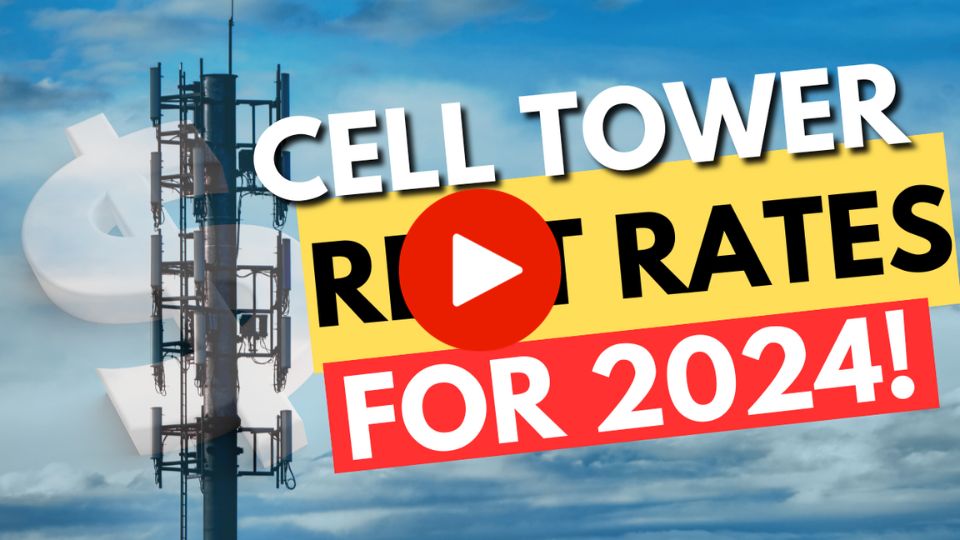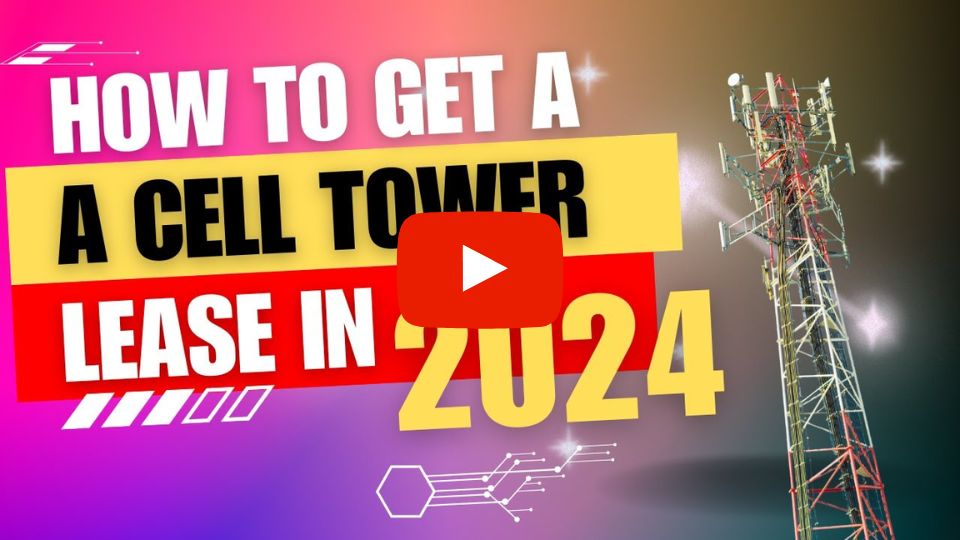1996 Telecommunications Act
Legislation designed to spur competition among wireless and wire line carriers; signed into law by President Clinton on February 8, 1996.
4G (Fourth Generation)
4G (also known as Beyond 3G), is an abbreviation for Fourth-Generation Communications System. It is a term used to describe the next complete evolution in wireless communications.
A 4G system will be able to provide a comprehensive IP solution where voice, data and streamed multimedia can be given to users on an “Anytime, Anywhere” basis and at higher data rates than previous generations.
Antenna
A metallic rod that typically extends from a wireless phone or cell site from which the electrical signal originates from. Cell sites might have different antennas for transmitting and receiving.
Wireless phones might have either small, fixed antennas (called “stubbies”) or retractable antennas. Newer phone models have “intennas,” which are antennas that are not visible to the user because they are housed completely inside the phone unit.
Backhaul
In wireless technology, backhaul refers to transporting voice and data traffic from a cell site to the switch. This is usually associated with a lack of bandwidth at a particular location or connectivity.
CDMA (Code Division Multiple Access)
Code Division Multiple Access is a digital radio system that transmits data and allows several radios to share the same frequencies.
Cell
A geographic area within a wireless system that is covered by the signal sent and received by the transmitter and receiver equipment located within that area. Typically referred to as a “cell site,” these are represented by hexagonal shapes by engineers when planning systems. That shape was originally derived from the honeycomb of bees, within which each single unit is referred to as a cell.
Cell Site
The location where the wireless antenna and network communications equipment is placed.
Cell Splitting
The processes of creating more coverage and capacity within a geographic area. This is done by having more than one cell cover the same area that originally only a single cell covered. Each cell then covers a smaller area, with lower power, and thus offers the ability to reuse frequencies more times in a larger geographic coverage area such as a city.
Cellular
The name given to the original concept of dividing a large geographic area into smaller coverage areas called cells. Each cell handles calls on different channels and communicates with the central processing unit, called a switch, to facilitate the handing-off of calls from one cell to another as a user moves through the system. Cellular is currently used in hundreds of countries worldwide and boasts more than 200 million subscribers.
Collocation
Is the placement of multiple antennas at a common physical site. This reduces the environmental impact, lowers real estate costs, speeds up zoning approvals and overall network deployment.
Collocation can be affected by competitive and interference factors. Some companies act as brokers, arranging for sites and coordinating several carriers’ antennas at a single site.
COLT (cell site on light truck)
A mobile site on a vehicle placed at a location to fill in or increase coverage.
COW (cell site on wheels)
A mobile site placed at a location to fill in or increase coverage.
CTIA (Cellular Telecommunications Industry Association)
A trade group representing cellular, PCS and enhanced specialized mobile radio carriers.
DAS
Also known as Distributed Antenna System. According to PCIA (the Wireless Infrastructure Association) and its DAS Forum: “DAS is a network of spatially separated antenna nodes connected to a common source via a transport medium that provides wireless service within a geographic area or structure. DAS antenna elevations are generally at or below the clutter level and node installations are compact.”
Distributed Antenna System
Please see DAS
Dead Spot
An area within a wireless communications system where there is no coverage.
This can occur because a cell site cannot be located close enough to the area without coverage, or because two signals on the same channel interfere with each other, causing them to “phase out” the other signal.
Digital
The newest form of wireless communications that takes all voice transmissions and converts them to computer language (zeros and ones, or “binary” language) and then reconstructs them into the original voice format at the other end. More secure than its original sibling, analog, and also relatively impervious to static or fading signals.
E911 (Enhanced 911)
911 service becomes E911 when automatic number identification and automatic location information is provided to the 911 operator.
Fiber Optic Cable
A cable that contains optical fiber. Optical fibers are widely used in fiber-optic communication, which permits transmission over longer distances and at higher data rates than other forms of communications. Fibers are used instead of metal wires because signals travel along them with less loss and they are immune to electromagnetic interference.
Foliage Attenuation
Reductions in signal strength or quality due to signal absorption by trees or foliage obstructions in the signal’s line-of-sight path. For example, 800 MHz systems are seldom deployed in forested areas. Pine needles-nearly the same length as 800 MHz antennas can negatively affect signal reception in that band.
GPS (Global Positioning System)
A series of 24 geosynchronous satellites that continuously transmit their position.
Used in personal tracking, navigation and automatic vehicle location technologies.
GSM (Global System for Mobile Communications)
Global System for Mobile communications is the most popular standard for mobile phones in the world, currently used by more than 3 billion people.
Interoperability
The ability of a network to operate with other networks, such as two systems based on different protocols or technologies.
Lightradio
New technology used to reduce the size of cell tower base stations. Lightradio technology is designed to replace two main components of a cell tower: the large cabinet-like structure at the base of the tower known as the base station, and the protrusions near the top known as the antenna elements. In their place will be two small devices that can each be held in the palm of one’s hand.
Macro Cell
A conventional cell tower structure that supports antennas and other equipment designed by carriers to give coverage over a large area.
Micro Cell
A low power cell tower, designed by carriers to give coverage over a small, localized area.
Microcellular
A technology that directs the cellular signal into an isolated spot, leaving broader coverage to conventional cell sites.
MOU (Minutes of Use)
A measurement of wireless subscriber activity directly affecting revenue.
Multipath Propagation
Signal distortion resulting when part of a transmitted radio-frequency signal is reflected from nearby surfaces on its way to a receiver. The ‘ghosting’ effect on television screens illustrates the multipath phenomenon.
NDA (Non-Disturbance Agreement)
This document is required when a Leaseholder sells out their interest in a cell tower lease and there is an existing mortgage or lien on the property.
NIMBY (Not In My Backyard)
Public sentiment that opposes local placement of ‘undesirable’ facilities such as antenna towers or toxic waste dumps.
PCIA (Personal Communications Industry Association)
A trade group representing PCS, SMR, private radio and other wireless users and carriers.
Perpetual Easement
The placement of an easement on a structure or property for an indefinite amount of time.
This is associated with a one-time lump sum payment for the cell tower lease payments.
Proportional and Owned Subscribers
Since many wireless carriers share certain markets in partnership with other carriers, they report subscribership for those markets in proportion to their share of the venture (e.g., their proportionate share of 10,000 subscribers in a market they share 50-50 with a partner would be 5,000). Conversely, in markets they operate solely, carriers report all of their subscribers as their own.
Repeater
Devices that receive a radio signal, amplify it and re transmit it in a new direction.
Used in wireless networks to extend the range of base station signals, thereby expanding coverage within limits more economically than by building additional base stations. Repeaters typically are used for buildings, tunnels or difficult terrain.
RF (Radio Frequency)
Is the portion of the electromagnetic spectrum where radio waves occur. A common use of radio frequency is to transport information through the atmosphere or outer space without wires.
Right of Way
Right of way refers to the land on which an infrastructure is built. An Infrastructure can be anything from a highway to an airport. Projects such as pipelines, power lines, or telephone facilities all require right of way.
ROFR (Right-of-First-Refusal)
Gives the individual or organization the right to buyout your Cell Site Lease at the same offer price someone else has made.
RSA (Rural Service Area)
Designation of a non-metropolitan area covered by a cellular licensee.
Smart Antenna
An antenna system whose technology enables it to focus its beam on a desired signal to reduce interference. A wireless network would employ smart antennas at its base stations in an effort to reduce the number of dropped calls, improve call quality and improve channel capacity.
Smart Card
A plastic card containing important data about a person’s identity to allow access to a network or premises. Also, a card containing subscriber information, often inserted into GSM phones for roaming to different countries.
SMT (Surface Mount Technology)
A surface mount device is a component, either active or passive, having no separate leads but which is part of the component body to permit direct mounting on a printed circuit board.
Soft Handoff
Procedure in which two base stations, one in the cell site where the phone is located and the other in the cell site to which the conversation is being passed, both hold onto the call until the handoff is completed. The first cell site does not cut off the conversation until it receives information that the second is maintaining the call.
Spectrum Allocation
Federal government designation of a range of frequencies for a category of use or uses.
For example, the FCC allocated the 1900 MHz band for personal communications services. Allocation, typically accomplished in years-long FCC proceedings, tracks new technology development. However, the FCC can shift existing allocations to accommodate changes in spectrum demand. As an example, some UHF television channels were recently reallocated to public safety.
Spectrum Assignment
Federal government authorization for use of specific frequencies or frequency pairs within a given allocation, usually at a stated geographic location(s). Mobile communications authorizations are typically granted to private users, such as oil companies, or to common carriers, such as cellular and paging operators. Spectrum auctions and/or frequency coordination processes, which consider potential interference to existing users, may apply.
TDMA (Time Division Multiple Access)
This is a channel access method that allows multiple users to share single carrier frequency.
The users transmit in rapid succession, one after the other, each using his/her own time slot.
UMTS (Universal Mobile Telecommunications System)
Is one of the third-generation cell phone technologies, which is also being developed into a 4G technology.
Wi-Fi
Wi-Fi, also known as 802.11b, is a leading wireless networking standard and operates in the unlicensed spectrum at 2.4 GHz, which is the same frequency band used by cordless phones, microwave ovens and Bluetooth. It uses a direct sequence spread spectrum modulation scheme.
Wi-Fi is capable of transmitting data normally at distances up to about 300 feet at a data rate of 11 megabits per second. Because the spectrum is shared with other users, the rates fall as more users log on.
Wi-Fi5
Wi-Fi5 refers to the 802.11a wireless networking standard, a technology that operates in the unlicensed 5 GHz band and can deliver data wirelessly at speeds up to 54 Mbps. Wi-Fi5 uses the same medium access controller as Wi-Fi but a different physical layer so it is not compatible.
Wireless
Using the radio-frequency spectrum for transmitting and receiving voice, data and video signals for communications.
Wireless Internet
An RF-based service that provides access to Internet e-mail and/or the World Wide Web.
Wireless LAN (Local Area Network)
Local area network using wireless transmissions, such as radio or infrared, instead of phone lines or fiber-optic cable to connect data devices.
WTO (World Trade Organization)
An intergovernmental organization set up in 1995 to oversee the rules of international trade, thus helping smooth the flow of trade, resolves disputes and organizes trade negotiations. The Geneva-based group, created as successor to the General Agreement on Tariffs and Trade, in 1997 negotiated the agreement to open trade and investment in basic telecommunications and information technology products.



